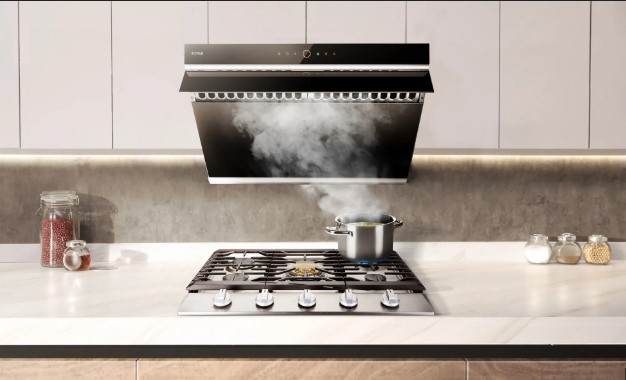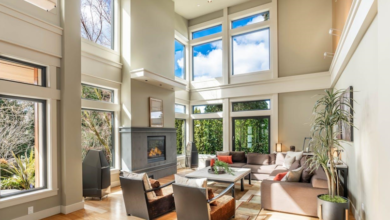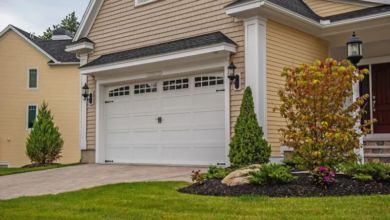Ducted vs Ductless Range Hoods: Which is Best for Your Kitchen?

A well-functioning kitchen ventilation system is essential for maintaining a healthy and comfortable cooking environment. Without proper ventilation, smoke, grease, cooking odors, and excess heat can accumulate in your kitchen, affecting both air quality and the overall ambiance of your home. Range hoods serve as the first line of defense against these issues, actively removing airborne contaminants and ensuring your kitchen remains fresh and clean after every meal preparation.
When selecting a range hood for your kitchen, one of the most fundamental decisions you’ll face is choosing between ducted and ductless models. Each type operates on different principles and offers distinct advantages depending on your kitchen’s layout, your cooking habits, and your home’s infrastructure. Understanding the key differences between these two ventilation systems will help you make an informed choice that aligns with your specific needs, budget, and installation capabilities. This comprehensive guide explores both options to help you determine which range hood type is the best fit for your kitchen.
Understanding Ducted Range Hoods
Ducted range hoods, also known as vented range hoods, work by actively extracting contaminated air from your kitchen and expelling it outside your home through a system of ductwork. When you turn on a ducted hood, a powerful motor drives an exhaust fan that pulls smoke, steam, grease particles, and cooking odors upward through the hood’s capture area. This contaminated air then travels through metal ducts that run through your walls, ceiling, or attic before being released outdoors through an exterior vent. The system creates negative pressure in the cooking area, effectively removing pollutants at their source before they can spread throughout your home.

The primary advantage of ducted range hoods lies in their superior ventilation performance. Because they completely remove contaminated air from your home rather than recirculating it, ducted hoods eliminate cooking byproducts more effectively than their ductless counterparts. This makes them particularly beneficial for households that engage in frequent high-heat cooking, use wok burners, or prepare foods that generate substantial smoke and strong odors. The continuous flow of fresh air also helps regulate kitchen temperature during extended cooking sessions, preventing the space from becoming uncomfortably warm.
Energy efficiency represents another significant benefit of ducted systems. While the initial installation requires more investment in ductwork and exterior venting, ducted hoods typically consume less ongoing energy because they don’t need to power multiple filtration stages. Once installed, they simply exhaust air directly outside, requiring only the fan motor to operate. This straightforward mechanism also means fewer components that can fail or require replacement over time. Additionally, because ducted hoods completely remove moisture from cooking, they help prevent humidity-related issues such as mold growth, peeling paint, and cabinet deterioration that can occur when steam repeatedly condenses on kitchen surfaces. Many homeowners find that ducted systems provide better long-term value despite higher upfront costs, particularly in homes where cooking is a daily activity rather than an occasional task.
Key Features of Ducted Range Hoods
Modern ducted range hoods incorporate several features that enhance their appeal and functionality. Quiet operation has become a priority for manufacturers, with many models now featuring insulated ductwork, vibration-dampening mounts, and strategically designed fan blades that minimize noise while maintaining strong suction power. Advanced filtration systems, typically consisting of stainless steel baffle filters or mesh filters, capture grease before it enters the ductwork, protecting your ventilation system from buildup and reducing fire hazards. These filters are dishwasher-safe and designed for long-term use, requiring only periodic cleaning rather than replacement.
When choosing the right ducted hood for your kitchen, start by measuring your cooktop width and selecting a hood that extends at least as wide as your cooking surface, ideally three inches beyond on each side for optimal capture. Calculate the required airflow capacity by considering your kitchen’s cubic footage and the type of cooking you do—professional-style ranges and high-BTU cooktops demand hoods with CFM ratings of 600 or higher, while standard residential cooking typically requires 300-500 CFM. Verify that your home’s structure can accommodate ductwork running to an exterior wall or roof, and consider the duct run length, as longer distances require more powerful motors to maintain effective ventilation.
Understanding Ductless Range Hoods
Ductless range hoods, also called recirculating range hoods, operate on a fundamentally different principle than their ducted counterparts. Instead of expelling contaminated air outside, these systems draw air upward through the hood, pass it through a multi-stage filtration process, and then recirculate the cleaned air back into your kitchen. The filtration typically involves two distinct layers: a metal grease filter that captures oil particles and grease droplets, followed by charcoal or activated carbon filters that absorb odors and some gaseous pollutants. This self-contained approach means ductless hoods require no external venting or ductwork installation, making them an attractive option for kitchens where ducting to the exterior is impractical or impossible.
Despite their convenience, ductless range hoods come with notable limitations that affect their overall effectiveness. The most significant drawback is their reduced ventilation capability compared to ducted systems. Because they recirculate air rather than removing it, ductless hoods cannot eliminate moisture, heat, or all cooking byproducts from your kitchen. The charcoal filters absorb many odors but lose effectiveness over time and require replacement every three to six months depending on cooking frequency, adding ongoing maintenance costs. These systems also struggle with high-volume cooking situations—preparing heavily spiced foods, searing meats at high temperatures, or using multiple burners simultaneously can overwhelm the filtration capacity, allowing smoke and odors to escape into your living spaces. Additionally, the recirculated air carries residual heat back into the kitchen, which can make the cooking environment less comfortable during extended meal preparation.
However, ductless range hoods offer compelling advantages that make them the preferred choice in specific situations. Installation simplicity stands out as their primary benefit—without the need for ductwork running through walls or ceilings, ductless hoods can be mounted in virtually any location above your cooktop, including kitchen islands, apartments, condominiums, and homes with structural limitations that prevent exterior venting. This flexibility dramatically reduces installation costs, often cutting expenses by half or more compared to ducted systems, since you avoid the labor and materials associated with duct installation, wall penetration, and exterior vent cap mounting. For renters or homeowners planning future renovations, ductless hoods provide adequate ventilation without permanent structural modifications. They also work well in mild-climate regions where kitchens benefit from maintaining conditioned air rather than constantly expelling heated or cooled air outdoors, potentially offering energy savings on climate control costs despite the filter replacement expenses.
Key Features of Ductless Range Hoods
Contemporary ductless range hoods have evolved to include features that maximize their effectiveness within the constraints of recirculating technology. Variable speed controls allow you to adjust suction power based on cooking intensity, conserving energy during light cooking while providing maximum filtration when needed. LED lighting has become standard, offering bright, energy-efficient illumination of your cooking surface while generating minimal heat. Many models now incorporate filter saturation indicators that alert you when charcoal filters need replacement, preventing the common problem of continuing to use exhausted filters that no longer absorb odors effectively. Some premium ductless hoods feature washable, long-lasting charcoal filters or hybrid filtration systems that extend the interval between replacements.
Selecting the appropriate ductless hood requires focusing on factors different from ducted models. Prioritize units with high-quality, multi-layer charcoal filters rather than single-layer options, as these provide superior odor absorption and longer service life. Consider the accessibility and cost of replacement filters before purchasing—some manufacturers use proprietary filters that are expensive or difficult to source, while others offer universal options at reasonable prices. Match the hood’s CFM rating to your cooktop size, though recognize that recirculating systems need higher CFM ratings than ducted hoods to compensate for reduced efficiency. Ensure the hood’s depth provides adequate coverage over front burners, as ductless systems have shorter effective capture zones than ducted models and cannot compensate for insufficient coverage area through increased suction alone.
Comparing Ducted and Ductless Range Hoods
Performance differences between ducted and ductless range hoods become immediately apparent during actual cooking scenarios. Ducted systems consistently outperform ductless models in ventilation effectiveness, removing 100% of smoke, moisture, and odors from your kitchen by expelling them outdoors. A ducted hood rated at 400 CFM provides genuinely powerful extraction that clears the air within minutes, while a ductless unit with the same CFM rating delivers noticeably weaker results because it must push air through multiple filter layers before recirculation. Energy consumption patterns also differ significantly—ducted hoods use electricity only to power the fan motor, typically drawing 100-200 watts during operation, whereas ductless models often require similar wattage but demand ongoing filter replacement costs that add $50-150 annually to operating expenses. Heat removal capabilities further distinguish these systems: ducted hoods actively lower kitchen temperature by exhausting hot air outside, while ductless units recirculate warm air back into the space, sometimes making kitchens feel warmer during extended cooking sessions.
Installation and maintenance requirements present contrasting challenges for each system type. Installing a ducted range hood involves cutting through walls or ceilings to run ductwork to an exterior vent, a process that typically requires professional contractors and costs between $500-2,000 depending on duct run length and structural complications. This installation permanently modifies your home’s structure but requires minimal ongoing maintenance—simply cleaning the metal grease filters every few weeks and occasionally inspecting ductwork for blockages. Ductless installation, by contrast, takes just a few hours and often qualifies as a DIY project, requiring only mounting the hood and plugging it into an electrical outlet, with total installation costs rarely exceeding $200-300. However, ductless maintenance demands more attention: grease filters need monthly cleaning, charcoal filters require replacement every three to six months, and the hood’s interior surfaces accumulate more residue because filtered air passes through the system repeatedly. Long-term reliability favors ducted systems, which typically operate trouble-free for 15-20 years, while ductless models may experience reduced effectiveness as filtration components age and motor performance gradually declines from processing contaminated air continuously.
Factors to Consider
Your kitchen’s physical layout should guide your range hood decision first—if your cooktop sits against an exterior wall or below accessible attic space, ducted installation becomes feasible and worthwhile. Cooking frequency and style matter equally: households that cook daily, prepare aromatic ethnic cuisines, or use high-heat techniques benefit substantially from ducted systems, while occasional cooks or those who primarily reheat and prepare simple meals find ductless hoods adequate. Budget considerations extend beyond initial purchase price to include installation costs and ongoing maintenance—calculate the total five-year cost of ownership, factoring in professional duct installation versus filter replacement expenses, to determine which option provides better value for your specific situation and usage patterns.
Real-Life Applications
In a busy family kitchen where multiple meals are prepared daily, a ducted range hood transforms the cooking experience by maintaining consistently fresh air quality regardless of what’s on the menu. Consider a household that frequently prepares stir-fries, grilled fish, and aromatic curries—a ducted system rated at 600 CFM efficiently captures intense smoke and strong spices at the source, preventing odors from permeating curtains, upholstery, and adjacent rooms. The kitchen remains comfortable even during hour-long cooking sessions because heat and moisture are continuously expelled outdoors rather than trapped inside. Conversely, a ductless hood proves ideal in a modern condominium where a young professional prepares light meals three to four times weekly. Without access to exterior venting due to building restrictions, the ductless system provides adequate filtration for sautéing vegetables, reheating leftovers, and occasional pan-searing, while its simple installation avoided the need for board approval and structural modifications that would have been required for ductwork.
Case Studies
A renovated 1950s bungalow illustrates ducted hood advantages—the homeowners installed a 900 CFM ducted system above their new six-burner range, running ductwork through the attic to a roof cap. After two years of daily cooking including frequent wok cooking and bread baking, their kitchen walls remain free of grease film and their home shows no lingering food odors. Meanwhile, a studio apartment dweller installed a ductless hood above a two-burner cooktop, finding it perfectly adequate for her cooking style of quick weeknight dinners and weekend brunches. Though she replaces charcoal filters quarterly, the $30 expense seems reasonable given that duct installation would have been impossible in her rental unit and would have cost thousands in a space she doesn’t own.
Future Trends
Range hood technology continues advancing rapidly, with smart home integration leading current innovations. Modern hoods now feature WiFi connectivity and voice control compatibility, allowing homeowners to adjust fan speeds, activate lighting, and monitor filter status through smartphone apps or voice assistants. Sensor technology represents another significant development—automatic hoods detect temperature changes and smoke particles, adjusting suction power without manual intervention to optimize performance while conserving energy. Ductless hood technology is experiencing particularly notable improvements as manufacturers address traditional limitations. Next-generation charcoal filters now incorporate advanced activated carbon compounds that last up to twelve months instead of three to six, substantially reducing replacement frequency and ongoing costs. Hybrid filtration systems combine electrostatic precipitation with carbon absorption, capturing smaller particles and neutralizing odors more effectively than conventional filters alone, narrowing the performance gap between ductless and ducted systems for moderate cooking applications. Brands like Arspura are introducing innovative kitchen hood accessories that extend filter life and improve air purification efficiency in recirculating models.
Making the Right Choice for Your Kitchen
The choice between ducted and ductless range hoods ultimately depends on your kitchen’s specific circumstances and your household’s cooking patterns. Ducted range hoods deliver superior ventilation performance by completely removing smoke, moisture, heat, and odors from your home, making them the optimal choice for frequent cooks, those who prepare high-heat or aromatic dishes, and homeowners with access to exterior venting. While they require higher upfront installation costs and structural modifications, their long-term reliability, minimal maintenance needs, and exceptional air quality benefits justify the investment for serious home cooks. Ductless range hoods, conversely, provide practical ventilation solutions for apartments, condominiums, and kitchens where ductwork installation is prohibitively expensive or structurally impossible. Their simple installation, lower initial costs, and flexibility make them suitable for light to moderate cooking, though ongoing filter replacement expenses and reduced effectiveness require consideration.
Evaluate your kitchen layout first—if exterior venting is feasible, ducted systems typically offer better value over time. Assess your cooking habits honestly: daily meal preparation with diverse techniques favors ducted hoods, while occasional cooking suits ductless models adequately. Calculate total ownership costs over five years, including installation, energy consumption, and maintenance, to make a financially informed decision. Whichever system you choose, proper sizing, quality construction, and regular maintenance will ensure your range hood effectively protects your kitchen’s air quality and maintains a comfortable cooking environment for years to come.





